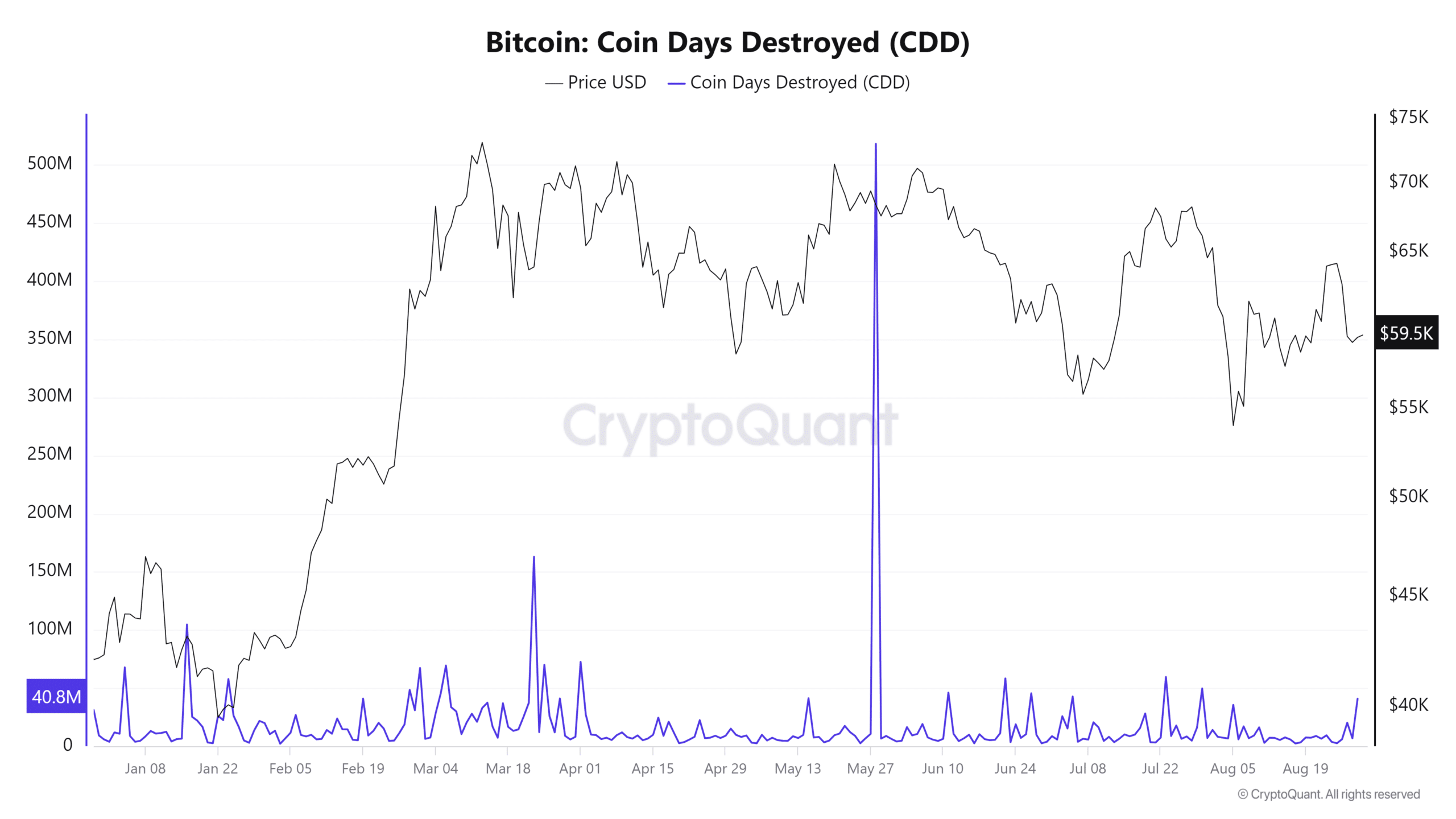Bitcoin exchange reserves drop below 2.6 million BTC in a volatile market

- BTC LTHs are torn between selling and holding amidst price volatility.
- Bitcoin remained below $60,000 at press time.
The recent increase in Bitcoin’s [BTC] volatility is evident, as its price struggles to maintain the crucial $60,000 range.
Despite these price fluctuations, a notable trend has emerged: Bitcoin exchange reserves have declined. This decrease in exchange reserves indicates that major holders, often called “whales,” are increasingly unwilling to sell their Bitcoin.
Bitcoin exchange reserves hit another low
AMBCrypto’s analysis of Bitcoin’s exchange reserves revealed that they have hit another low, continuing a significant downward trend that began at the start of the year.
According to the chart on CryptoQuant, the reserves have fallen to approximately 2.6 million BTC. This was down from over 3 million BTC reserves recorded in January.
Also, this decline in exchange reserves suggests a reduction in the liquidity available on exchanges.
This reduction in liquidity can be a positive sign for Bitcoin’s price, as it indicates that fewer holders are looking to sell their BTC. The move reduces the selling pressure on the market.
Furthermore, the ongoing decline in exchange reserves is likely driven by long-term holders (HODLers). This behavior reflects a strong belief in Bitcoin’s future value and a reluctance to engage in short-term trading.
As long-term holders’ dominance increases, the market could become more stable and less susceptible to large panic sales.
Comparing CDD with Bitcoin exchange reserves
The recent analysis of Bitcoin’s Coin Day Destroyed (CDD) metric alongside Bitcoin exchange reserves suggests an interesting divergence. The CDD metric has experienced a slight spike recently.
This contrasted with the previously stable trend that indicated long-term holders (LTHs) were not actively spending their coins.
The CDD metric tracks the movement of older Bitcoins that have accumulated “coin days” while remaining unspent. Each Bitcoin earns a “coin day” for everyday it is held in a wallet without being moved.
When these Bitcoins are eventually spent, the accumulated coin days are “destroyed,” hence the term “Coin Day Destroyed.”
The recent increase in CDD suggests that the recent volatility in Bitcoin’s price may have triggered some long-term holders to move or sell their coins, breaking the previous trend of holding.
This shift could be a response to market uncertainty or a strategic decision by some holders to capitalize on price movements.
BTC remains volatile
The recent analysis of Bitcoin’s daily price trend indicates that Bitcoin rose to approximately $61,000 in the previous trading session. However, it could not sustain this level and eventually closed the session at around $59,264.
This pattern of briefly reaching higher prices before retreating has been a consistent trend for Bitcoin over the last few days, contributing to increased market volatility.
The extent of this volatility is further illustrated by the behavior of Bitcoin’s Bollinger Bands, a technical indicator that measures price volatility.
Read Bitcoin’s [BTC] Price Prediction 2024-25
The “elasticity” of the Bollinger Bands refers to their widening in response to increased price fluctuations. When the bands stretch wider, it signifies higher volatility as the price moves more dramatically in either direction.
As of this writing, Bitcoin is trading at around $59,597, with a slight increase of less than 1%. The ongoing volatility, as shown by the Bollinger Bands, suggests that Bitcoin is experiencing significant short-term price swings.






![dogwifhat's [WIF] 3-day rally has eyes glued, yet a hidden risk lurks](https://ambcrypto.com/wp-content/uploads/2025/04/Gladys-8-400x240.jpg)


